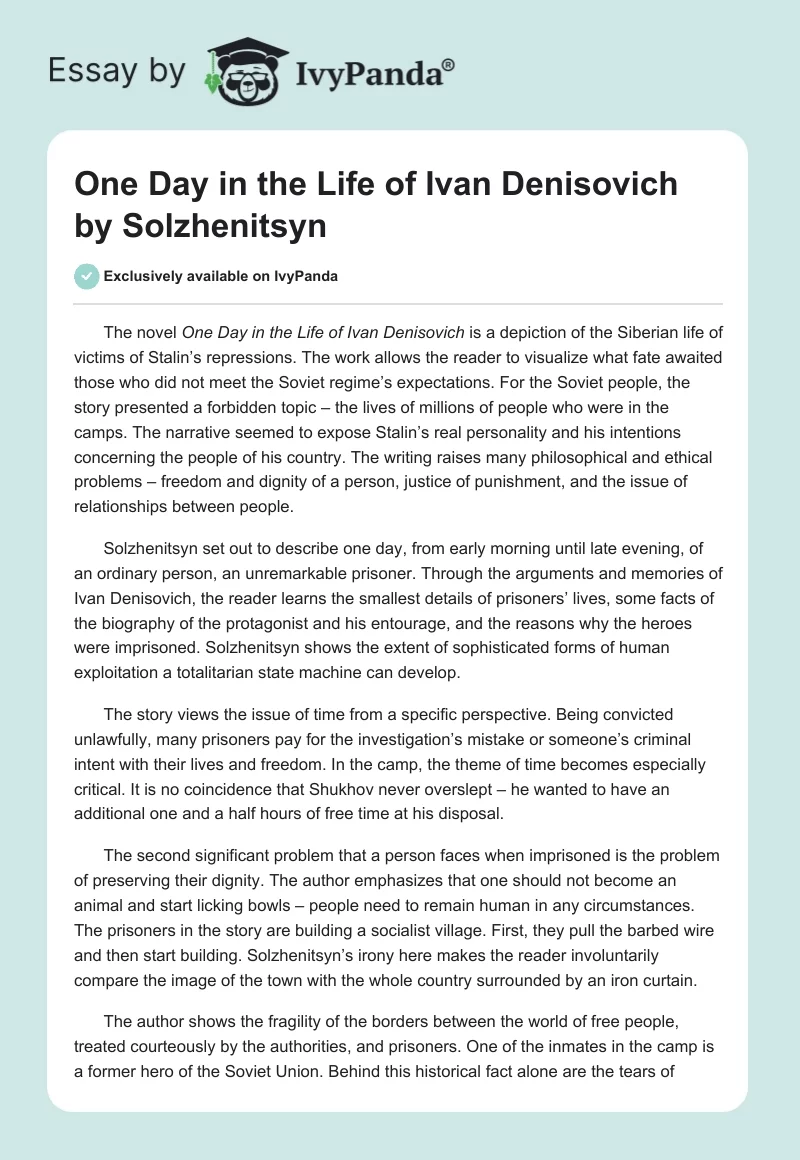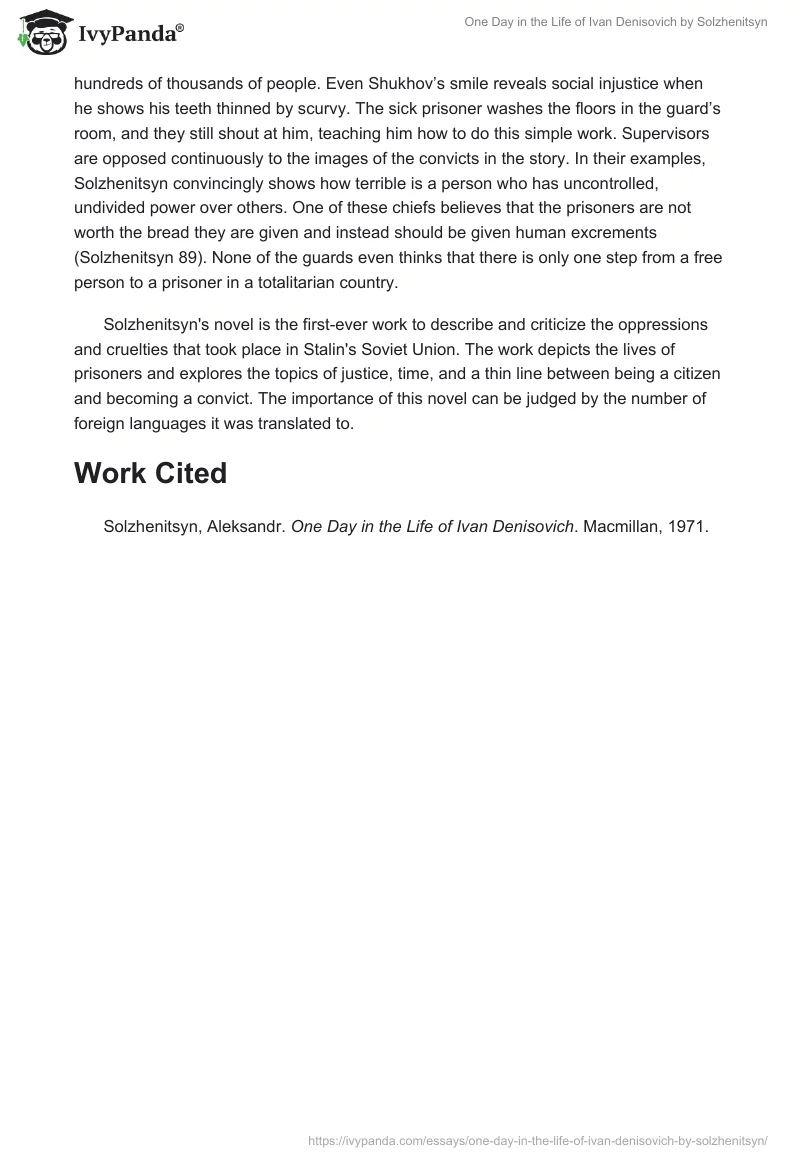The novel One Day in the Life of Ivan Denisovich is a depiction of the Siberian life of victims of Stalin’s repressions. The work allows the reader to visualize what fate awaited those who did not meet the Soviet regime’s expectations. For the Soviet people, the story presented a forbidden topic – the lives of millions of people who were in the camps. The narrative seemed to expose Stalin’s real personality and his intentions concerning the people of his country. The writing raises many philosophical and ethical problems – freedom and dignity of a person, justice of punishment, and the issue of relationships between people.
Solzhenitsyn set out to describe one day, from early morning until late evening, of an ordinary person, an unremarkable prisoner. Through the arguments and memories of Ivan Denisovich, the reader learns the smallest details of prisoners’ lives, some facts of the biography of the protagonist and his entourage, and the reasons why the heroes were imprisoned. Solzhenitsyn shows the extent of sophisticated forms of human exploitation a totalitarian state machine can develop.
The story views the issue of time from a specific perspective. Being convicted unlawfully, many prisoners pay for the investigation’s mistake or someone’s criminal intent with their lives and freedom. In the camp, the theme of time becomes especially critical. It is no coincidence that Shukhov never overslept – he wanted to have an additional one and a half hours of free time at his disposal.
The second significant problem that a person faces when imprisoned is the problem of preserving their dignity. The author emphasizes that one should not become an animal and start licking bowls – people need to remain human in any circumstances. The prisoners in the story are building a socialist village. First, they pull the barbed wire and then start building. Solzhenitsyn’s irony here makes the reader involuntarily compare the image of the town with the whole country surrounded by an iron curtain.
The author shows the fragility of the borders between the world of free people, treated courteously by the authorities, and prisoners. One of the inmates in the camp is a former hero of the Soviet Union. Behind this historical fact alone are the tears of hundreds of thousands of people. Even Shukhov’s smile reveals social injustice when he shows his teeth thinned by scurvy. The sick prisoner washes the floors in the guard’s room, and they still shout at him, teaching him how to do this simple work. Supervisors are opposed continuously to the images of the convicts in the story. In their examples, Solzhenitsyn convincingly shows how terrible is a person who has uncontrolled, undivided power over others. One of these chiefs believes that the prisoners are not worth the bread they are given and instead should be given human excrements (Solzhenitsyn 89). None of the guards even thinks that there is only one step from a free person to a prisoner in a totalitarian country.
Solzhenitsyn’s novel is the first-ever work to describe and criticize the oppressions and cruelties that took place in Stalin’s Soviet Union. The work depicts the lives of prisoners and explores the topics of justice, time, and a thin line between being a citizen and becoming a convict. The importance of this novel can be judged by the number of foreign languages it was translated to.
Work Cited
Solzhenitsyn, Aleksandr. One Day in the Life of Ivan Denisovich. Macmillan, 1971.


